What 2020 will bring part one
In its visualizing
2020, Council of Foreign Relations experts spotlighted some of the trends they
will be tracking in the year ahead, to which we will add an additional
three-part 2020 outlook.
The five issues the
Council of Foreign Relations experts spotlighted are:
1) The Shrinking U.S.-China Trade Flows
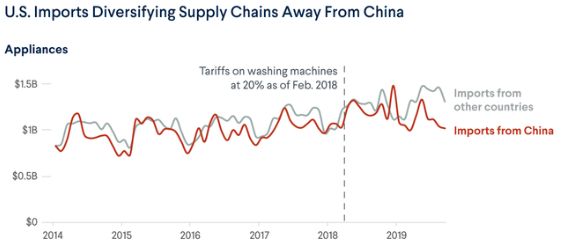
2) An observation
about Latin America’s fading left (whereby underneath see our own observation
in reference to the unrest in Latin America):
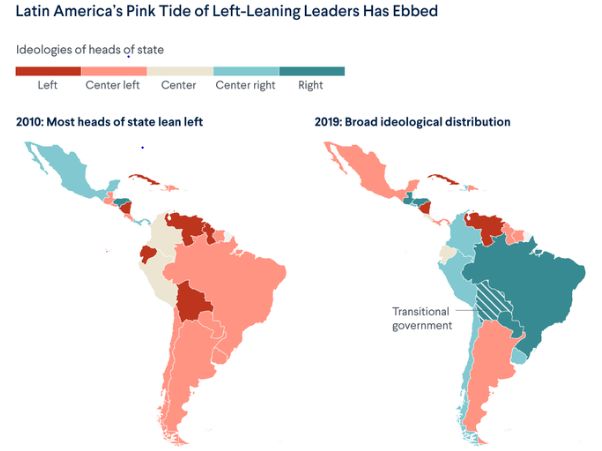
3) Africa’s looming
housing crisis which could threaten urban health and safety and provoke serious
social frustration and political unrest. To head off a crisis, civic leaders
should move quickly to introduce zoning, construction, and related reforms that
set the stage for smart, sustainable additions to the urban housing stock.
4) Zeroing out
automobile emissions whereby on 1 September we highlighted the proposal by
Klaus Gietinger how self-driving cars powered by
renewable energy, might yield significant tangible
benefits.
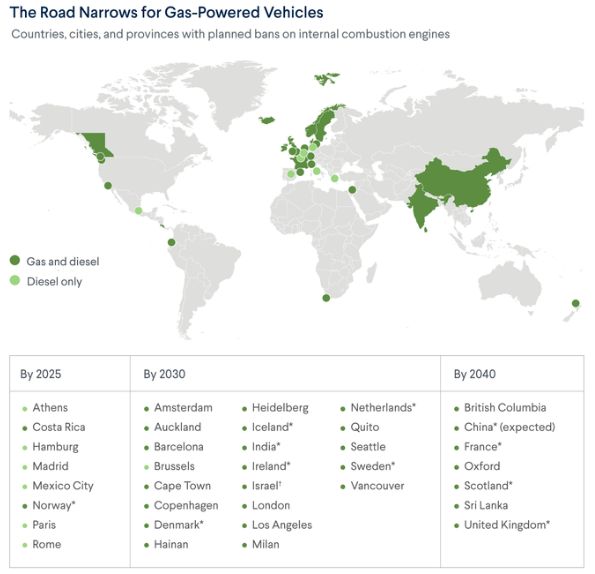
5) The research and
development race with China currently leading, adding that the US could remain
competitive if the government restores investments in this area to prior
levels. Boosting federal R&D spending to its historical average of about 1
percent of gross domestic product (GDP), some $230 billion, could ignite the
type of discoveries that have reshaped and revitalized the U.S. economy.
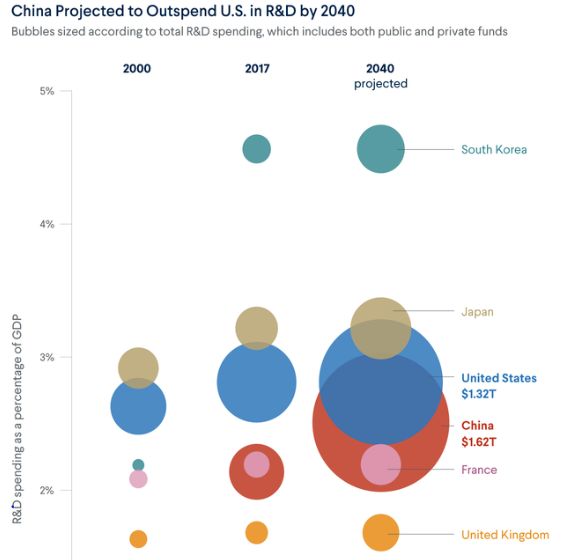
6) The issue of aging
Asia a subject we covered end 2018 using China as a
case study.
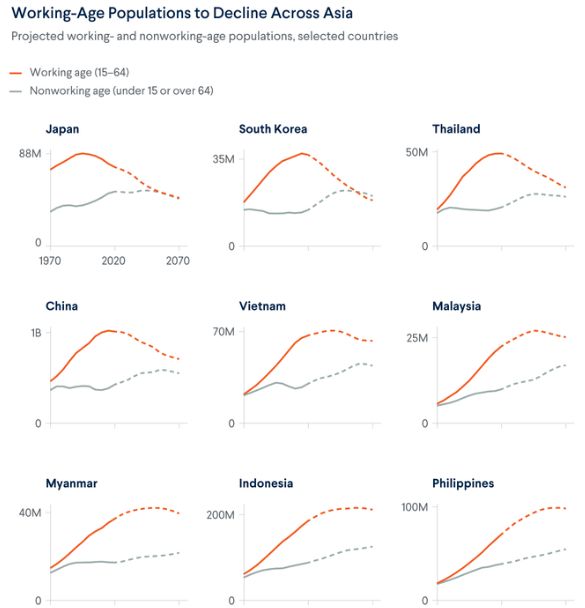
Outlook 2020 P.1
First, an overview
followed by details about hotspots, Brexit, Hong Kong, Unrest in Latin America
as also highlighted by the Chile example, the economy and technology
underneath.
Uncertainty
surrounding the outcome of the U.S. 2020 presidential and congressional
elections will shape the actions and decisions of countries around the world. A
contentious election year in the United States means that even as other nations
deal with their own domestic, regional and global concerns, they must take into
account the opportunities and risks in decisions that overlap U.S. interests,
considering the possible dramatic post-election change in U.S. posture.
"Rogue"
nations such as Iran and North Korea, and non-state actors including the
Taliban and the Islamic State, will assess ways in which they might leverage
their behavior to exploit perceived weaknesses in U.S. foreign policy, while
also calculating the risks or benefits in making deals with the Trump
administration, or waiting for a possible change in U.S. leadership. If they
press to accelerate a U.S. response in their favor, the risk of aggressive
posturing to include military and militant action will grow along with the
likelihood of miscalculation of U.S. responses to aggressive tactics.
China, Russia, and
other U.S. competitors, as well as Washington's partners in Europe and Asia,
will approach making or rejecting commitments with the United States in 2020
with more caution until there is certainty about the next administration. These
countries will consider their much longer-term relationship with the United
States, seeking to avoid obligations that could get overturned or taking
actions that assume a change of White House leadership.
I am not so sanguine
about the ability of the world to avoid localized economic shocks. Social and
political stresses stemming from slowing Chinese economic growth rates, rising
protests over social inequality and economic austerity programs across Latin
America, North Africa and the Middle East, exacerbated by sluggish commodity
prices, and Brexit-related uncertainty could contribute to localized economic
instability.
Hotspots to Watch
The Iranian-U.S. Escalation Will Stop Short of
Outright Conflict
Iran and the United States
will most likely avoid direct military conflict even as Tehran significantly
ramps up its nuclear program in response to U.S. sanctions pressure. Iran will
continue its aggressive strategy of targeting regional oil and gas
infrastructure and the Strait of Hormuz to up the price of the United States
maintaining its harsh sanctions strategy. Iran's retaliatory strategy risks
escalating into a military confrontation even though both the United States and
Iran will seek to avoid one. Iran's progressive escalation in its nuclear
program could lead it to follow the United States in withdrawing from the Joint
Comprehensive Plan of Action (JCPOA) nuclear deal. That would force Europe to
consider imposing sanctions on Iran or trigger the nuclear deal's dispute
resolution mechanism. If the JCPOA remains intact, the U.N. conventional arms
embargo on Iran would expire in October 2020 — pushing the United States to
take aggressive unilateral measures to try to enforce one.
A Year of Calm Will Mask Brexit's Future Disruptive
Potential
The new, Conservative
Party-led British Parliament will approve a Brexit deal, and the United Kingdom
will leave the European Union in early 2020. Initial disruptions will be
minimal because the United Kingdom will remain in the EU single market in 2020,
providing a period of certainty for global markets. London and Brussels will
spend the year in talks over a free trade agreement, but the complexity of the
negotiations will make it difficult for them to reach an accord in 2020. Key
friction points include Brussels pushing London to keep the norms and
regulations of the single market and London pushing the European Union to
include as many services as possible, a provision the European Union will
resist. Without a trade deal, uncertainty for global markets, supply chains,
and investors will again grow in mid-2020 as another cycle of waffling between
the possibility of extended negotiations or a disruptive turn to WTO tariffs
begins.
Protests Remain the New Normal in Hong Kong
Hong Kong's crisis will persist as the city's new
normal becomes prolonged political impasse and continued standoffs on the
street. Sustained business disruptions, vandalism and the withdrawal of more
foreign business and capital from Hong Kong will extend the city's recession
beyond 2020. Besides stoking the overall rivalry between the United States and
China in their trade war, the chronic acrimony in Hong Kong will allow other,
more stable business hubs such as Singapore or even Malaysia to attract
companies looking for alternatives. It will also spur China to further
emphasize mainland economic centers such as Shanghai, Shenzhen, and Beijing to
reduce reliance on Hong Kong. For more on where Hong Kong is going, see as an
example:
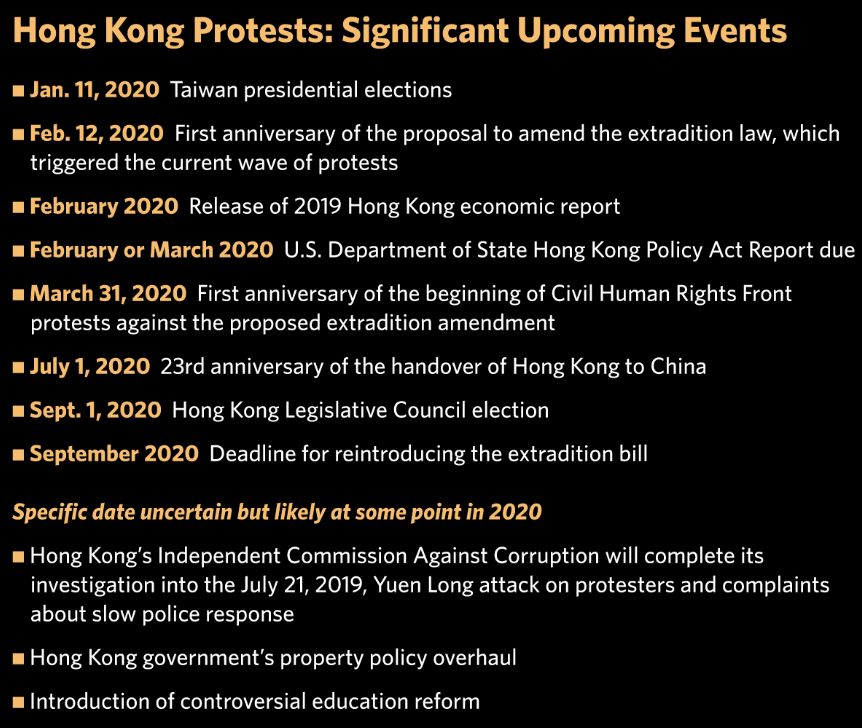
The results of Hong
Kong’s district council elections on Sunday were worse than expected and
Beijing should start considering how the outcome will affect the 2022 race for
the city’s chief executive, mainland specialists on Hong Kong affairs have
warned.
The pro-democracy
camp won 392 of the 452 seats to control 17 out of the city’s 18 district
councils.
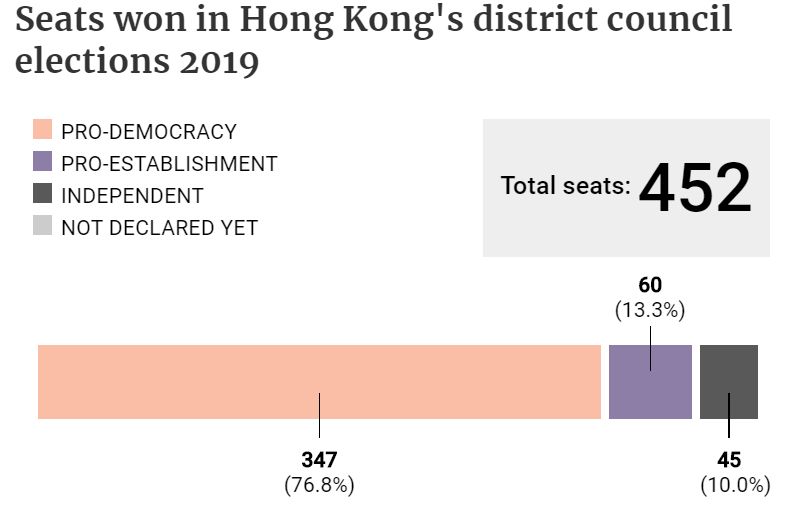
Although councilors’
powers are limited, the victory will give the
bloc a bigger say in the selection process for the next chief executive by
handing them control of 117 seats on the 1,200-member committee that chooses
the chief executive.
Whatever the outcome
of the current crisis, Hong Kong is likely to be significantly altered. Even
before the crisis, the city was suffering because of China's slowing economy
and the trade war; since the unrest has started, the city has witnessed huge losses
to its all-important tourism and service industries (both of which account for
roughly 90 percent of GDP). A harsher crackdown would hurt the city much more.
At the same time, the city's position as a leading financial hub relies,
partially at least, on relative political neutrality. But as the city's
political and ideological polarization deepens, it could threaten the city's
business environment in the long term as the region's competition for capital
intensifies further. What's more, the antagonism toward Beijing that will stem
from such polarization will inevitably lead Beijing to increase support for
mainland cities, such as Shanghai and its trade zone or Shenzhen, to compensate
for Hong Kong's unreliability even as the city will remain a critical link for
the foreseeable future.
Despite its best
efforts, China will find it nearly impossible to also keep Hong Kong from
interfering in U.S. trade negotiations over the next year. Although the United
States and China recently reached a so-called "phase one" trade deal
in time for U.S. Election Day in November, the deal's narrow scope still leaves
the underlying commercial and economic disagreements unsettled. Organizations
caught in the middle of the dispute should not expect an improvement in
political relations, especially with Washington labelling China a competitor
and a potential security threat to the US.
Kashmir will keep
India and Pakistan at risk of conflict in 2020
The majority of
attacks in Indian-controlled Kashmir since February have continued to involve
the three most active militant groups there: Jaish-e-Mohammed, Lashkar-e-Taiba
and Hizbul Mujahideen, all of which have leadership based in Pakistan.
Doubtless,
guaranteeing security will remain India's President Modi's priority for Kashmir
in 2020. A vigorous counterinsurgency remains underway there involving multiple
security detachments. The government claimed 3 Dec. that infiltration from Pakistan across the
Line of Control has increased by 50 percent, creating a pretext for more
retaliation against Pakistan should a sizable attack occur in Indian-controlled
Kashmir. Given that low-level militant incidents in Indian-controlled Kashmir
since March have not garnered a response from India against Pakistan (exchanges
of fire continue across the Line of Control, but they are not examples of
retaliation per se), it would appear that a significant number of Indian
security personnel must die before India would be willing to send its forces
across the Line of Control and risk a Pakistani response.
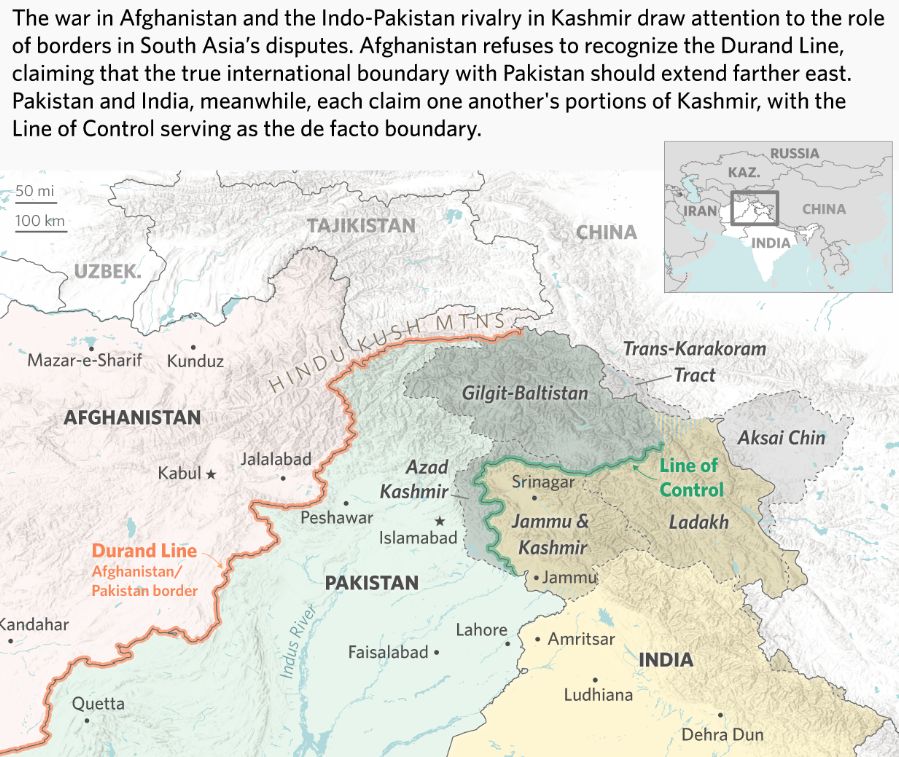
By fulfilling its
campaign promise to revoke the autonomy of Jammu and Kashmir, the BJP took a
major step toward advancing the territorial unity of India, though at the cost
of undermining talks aimed at normalizing relations with Pakistan. But
Indian-controlled Kashmir is still experiencing internet cutoffs; detentions,
such as that of three former chief ministers of the former state; and
restrictions on free movement. Until its security problems are resolved and
normalcy returns, the investment and migration from elsewhere in India that
Modi wants to foster in Indian-controlled Kashmir will not substantially
materialize. In the meantime, the dispute over the region will continue to loom
over Indian-Pakistani relations.
Unrest in Latin America
Bolivia: Despite both
sides agreeing to new elections for no later than April 14, each will probably
try to gain an advantage ahead of the vote. Protests may resume if either side
feels it has been cheated in the balloting.
Chile: A
constitutional referendum scheduled for early 2020 will kick off a year of
debate, redrafting and additional votes. Protests are likely to continue as
activists seek to maintain pressure ahead of the referendum and on the
constitutional convention. Demonstrations are likely to escalate drastically if
the referendum fails or if irregularities undermine its legitimacy. The
convention will help to diminish some protests, but the underlying grievances
will continue to motivate extremists who want more radical reform.
Colombia: Widespread
unrest will likely continue as President Ivan Duque's administration faces off
against the array of left-wing groups that make up the National Strike
Committee. These protests aren't likely to be overly disruptive as long as the
committee enjoys broad popular and political support. However, the country
suffers from instability arising from armed militant groups and from its long
history of extrajudicial violence by security forces. Such strong-arm tactics
against protesters will drive disruptive action and possibly even a violent
backlash.
Argentina: The
victory in the presidential race of Peronist Alberto Fernandez has probably cut
the risk of widespread unrest from trade unionists. But the country's
long-running economic ills could still stoke grassroots protests against the
government or foreign institutions, such as the International Monetary Fund,
which are often blamed for Argentina's malaise.
Brazil: President
Jair Bolsonaro's administration succeeded in passing pension reform during
2019, but it is facing stiffer resistance on the rest of its legislative
agenda. This, combined with Bolsonaro's caustic tone on certain issues and his
support for pro-business policies, could boost opposition to his
administration; 2019 saw several major protests over specific issues, and it is
possible these will escalate in 2020.
The impact of unrest in Chile
The risk of unrest throughout
the constitutional reform process threatens Chile's economy and
business-friendly reputation. The protests already appear to have dampened
economic growth, with fourth-quarter GDP projected to contract 2.5 percent
year-on-year, and the central bank forecasting 2019 growth of only 1 percent,
the lowest since the 2008 global financial crisis.
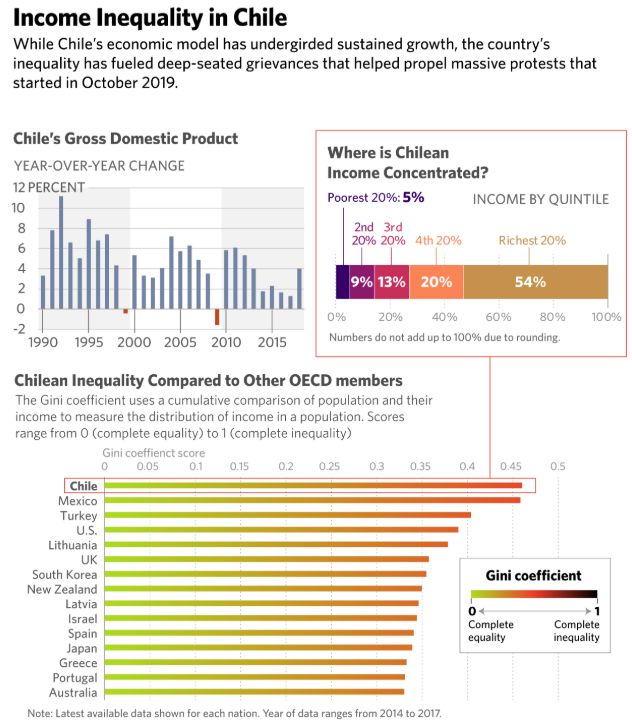
Because protests have
been centered in urban areas, economic pain has been focused on the non-mining
sector, which contracted 4 percent as compared to mining sector growth of 2
percent. Chile's mineral exports, primarily copper and lithium, will, therefore,
become increasingly important to sustaining overall economic growth. The
central bank already projects that overall foreign investment in Chile may drop
4 percent in 2020. This will spur the government to incentivize investment in
the mineral sector, threatening Chile's longtime goal of moving up the value
chain of exports and moving away from reliance on sales of raw metals.
Growing copper demand
in the coming year due to a nascent energy transition could help increase
Chile's copper revenues and exports. So could a potential durable trade truce
between the United States and China, which alone accounts for over half of
global copper imports. Lithium presents some opportunities, but not as many as
copper. The Chilean government has plans to boost lithium production and expand
from the current operations in Atacama to new ones at the Aguilar salt flat.
Still, lithium prices remain depressed, despite an expected increase in demand
for electric vehicle batteries. U.S.-led efforts to secure a supply chain of
the strategic metal from friendly countries, however, could help offset the
economic headwinds limiting Chile's lithium ambitions.
But regardless of the
government's efforts, the next few years in Chilean politics will remain
unpredictable, and the economic damage from unrest could worsen, even
potentially affecting the mining sector. If nationwide unrest once again
spikes, copper miners or even critical fuel workers may stage sympathy strikes.
And given the need for political compromise, the final constitution may fall
short of satisfying public demands, meaning the successful conclusion of
charter change is unlikely to totally quiet unrest.
Slow Economic Recovery Takes Shape
Uncertainty injected
into global trade policy by aggressive U.S. actions will continue to be a chief
driver of economic weakness throughout the year even as the U.S.-China trade
deal injects some optimism for growth. A number of other downside risks that
could easily be triggered in 2020 will keep a lid on global economic growth.
While China has been able to manage its economic slowdown, its coping
strategies rest on a number of risky tactics, raising the possibility that it
will experience a sharp downturn, particularly if its trade war with the United
States intensifies. But it's more likely that while growth in the Chinese and
U.S. economies will slow, neither will undergo a sudden contraction.
Economic growth in
Western Europe will continue to be anemic, likely remaining below 1 percent for
the year. A significant factor in that weakness will be Germany’s continued
economic malaise and Berlin’s unwillingness to use significant fiscal stimulus to
counter it. Emerging markets are also set for a difficult 2020. Argentina will
be mired in an economic crisis. Brazil and India will each struggle to make the
structural reforms necessary to resume higher levels of growth. The Turkish
economy, driven by unsustainable levels of stimulus, may continue its slow
recovery, but no quick acceleration is likely. Continued global economic
weakness will help fuel conditions for more large-scale protests in developing
countries with economic inequality and weak governance.
Other factors
impeding global growth are the limitations many countries face in using the
strong monetary or fiscal response as an economic stimulus. In the developed
world, the use of monetary policy and low-interest rates to generate growth has
largely exhausted its utility. In some countries with room to employ fiscal
stimulus, such as Germany, political opposition will likely keep that option
off the table.
Despite a Deal With China, the Trade Offensive
Continues
With final approval
of the United States-Mexico-Canada Agreement imminent and a phase one deal with
China initially agreed upon, Trump has clearly made finalizing trade deals a
key goal ahead of the 2020 elections. The United States and China are unlikely
to follow their tariff-reducing deal with a more comprehensive trade
arrangement in 2020, as China is unlikely to make significant concessions on
U.S. demands for structural reform. Once the phase one deal is finalized, it is
likely to remain intact in 2020, but disagreements over interpretation and even
a potential small-scale escalation (such as a limited reintroduction of
tariffs) will remain a possibility. But because of Trump's desire to make the
deal a centerpiece of his trade policy's successes in the November elections,
any escalation will be tempered as to not completely upend the deal.
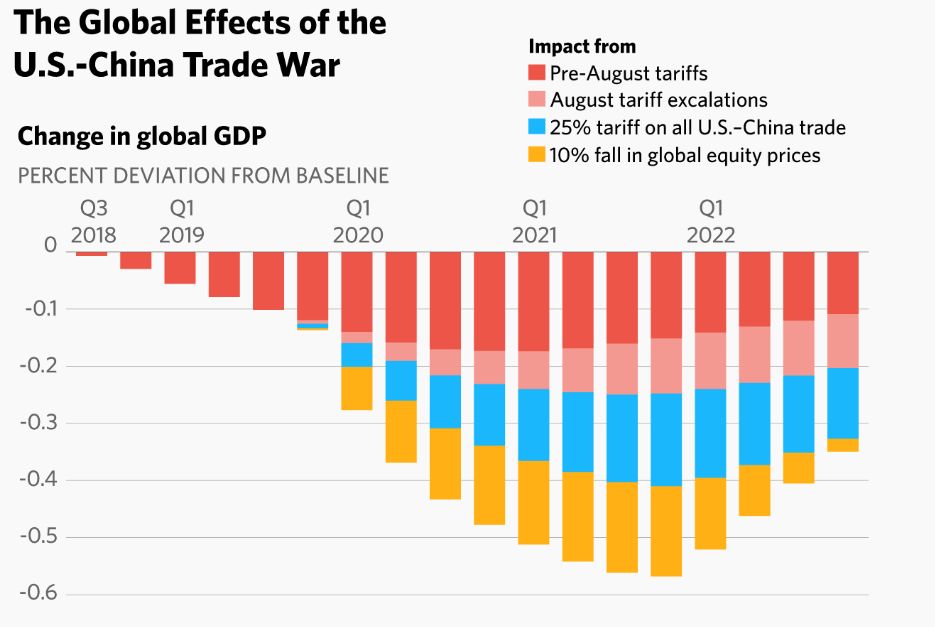
Meanwhile, U.S.-EU
trade talks will stall over disagreements on agricultural products, and the
United States will place more tariffs on European goods. The White House could
rely on a number of justifications to implement the tariffs, such as France's
digital services tax or U.S. national security concerns over auto imports. But
compared to Washington's trade war with Beijing, the scope and scale of its new
trade assaults against Europe will remain small.
U.S. efforts to
demobilize the World Trade Organization's appellate body by denying it
sufficient members to hear dispute cases will stymie the appeals process
through the mechanism throughout 2020. U.S. efforts to force new negotiations
over WTO reform may start to gain traction over the year, but in the meantime,
the WTO's members will try to keep dispute cases moving by modifying the
settlement process or finding alternatives. The nonexistent appeals process
will prompt other countries to follow the U.S. lead in employing aggressive and
unilateral action in trade disputes. This would include a European response to
U.S. tariffs against Airbus and the ongoing WTO case involving U.S. subsidies
to Boeing.
The Competition for Tech Supremacy Rages On
Amid growing
competition among Europe, the United States and China for technological
supremacy, more tech sectors will be classified as national and economic
security priorities. This competition will continue to fray global tech supply
chains. As auctions, rollouts and infrastructure buildout for 5G data networks
expand significantly in 2020, the United States is likely to maintain its
pressure on China's Huawei Technologies by continuing to sharpen export
controls to limit Huawei's access to U.S. technology and suppliers.
Washington will also
push its allies to similarly restrict the company, including barring its
equipment from 5G networks, but those efforts will meet with limited success.
Instead, most countries will try to appease both China and the United States by
allowing Huawei access to their networks, albeit limiting the use of its
equipment in those networks, increasing the cost of the global 5G rollout.
Eventually, the United States could take punitive action against countries that
continue to use Huawei's equipment, further fraying U.S. alliances. Huawei
represents but one facet of the sprawling global tech competition that will
continue to rage between the United States and China. There is much at stake:
Winning the race to develop a specific new technology will allow the victor,
whether Washington or Beijing, to begin to set that technology's global
standards by default.
China, Europe, and
the United States will prop up their domestic tech companies by using a wide
range of support mechanisms and restricting access to foreign investment. EU
efforts to expand the regulation of U.S. tech companies will increase in 2020.
In response, Washington will open more investigations looking into
anti-competitive behavior and could impose punitive trade measures. The
European Union will also seek to increase control over efforts by state-backed
Chinese companies to purchase European companies in strategic sectors. The
United States will use increased sanctions and export controls to cut down
China's tech sector, particularly for companies involved in places like Hong
Kong and Xinjiang and those involved in the development of strategic technologies,
such as artificial intelligence.
The Business Risks of Climate Change Will Increase
Businesses and
governments increasingly will be confronted with climate risk in 2020. This
includes the risk of damage to business infrastructure, as well as corporate
liability precipitated by governments and advocates who perceive corporate
responsibility for natural disasters or pollution that accelerate climate
change. An additional risk to future profits and company growth may come from
the decreasing use of fossil fuels as the energy transition to renewables takes
firmer hold and the role of electric vehicles expands, leading eventually to
peak oil demand at some point in the next 20 years.
The first check on
the progress of national plans and goals under the Paris Agreement on climate
change will come in 2020, illustrating just how little progress has been made,
which will probably renew international attention. The year will also most likely
mark the official exit of the United States from the accord.
Many countries will not
achieve their climate targets under the agreement. But citizen activism will
increase and more lawsuits will be filed to try to force change in national
climate policy beyond the two dozen countries already contending with legal
challenges. Government leaders will increasingly be compelled to more seriously
consider changing behaviors and economic calculus. Activists will also target
energy firms with legal challenges. Over the course of 2020, climate risk will
be more consistently priced into credit decisions and capital markets. Energy
companies will continue to be forced to reevaluate future investment as policy
shifts and judicial challenges begin to affect reliance on traditional
hydrocarbon plants to generate electricity, especially in Europe. The new
European Commission will prioritize aggressive renewable energy goals starting
in 2020 as it seeks both to stimulate the lagging European economy and maintain
Europe's position as a global standard-setter for climate measures. Demand for
electric vehicles will continue to grow in China, even as direct production and
consumer subsidies wane.
For updates click homepage here